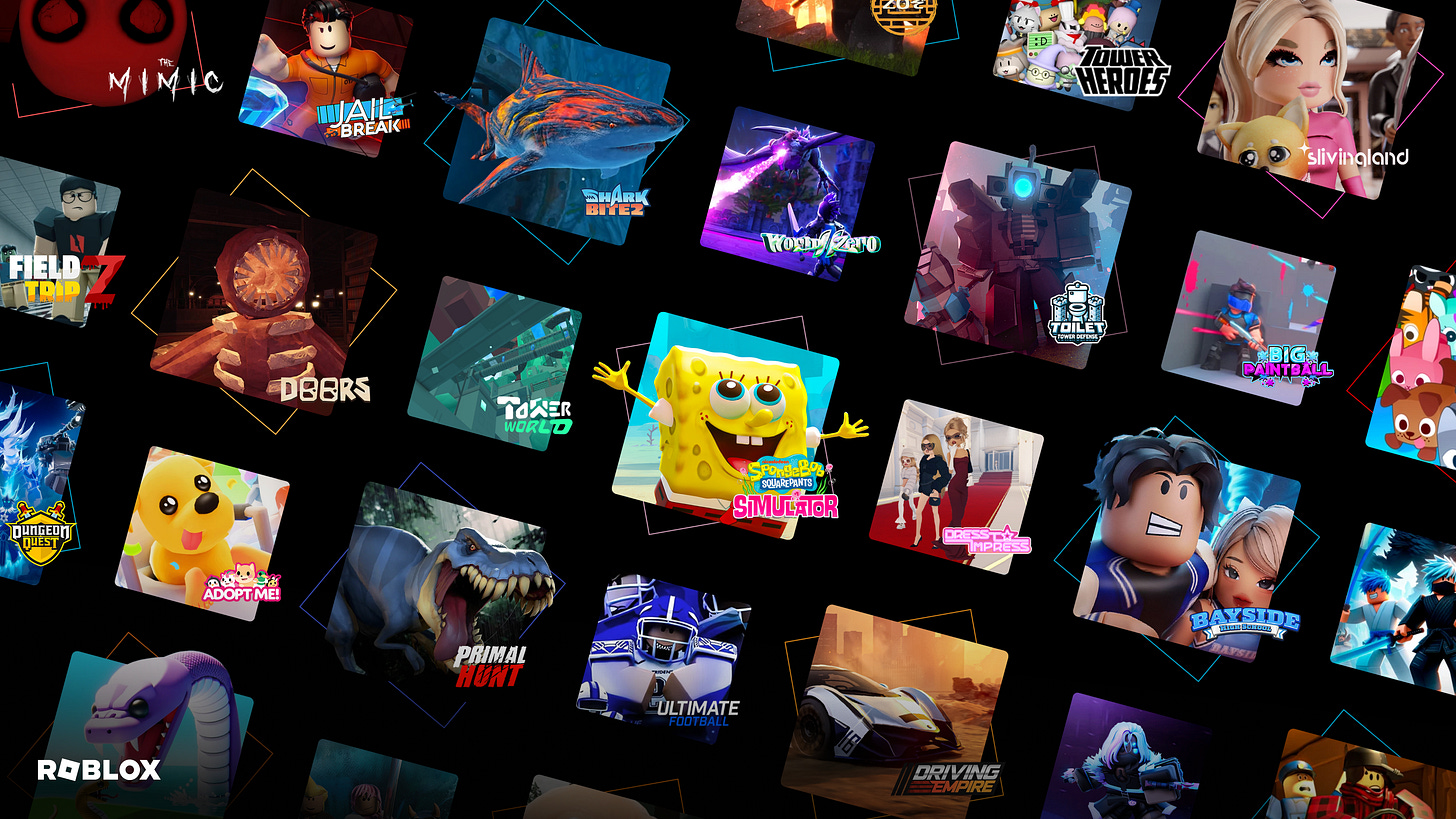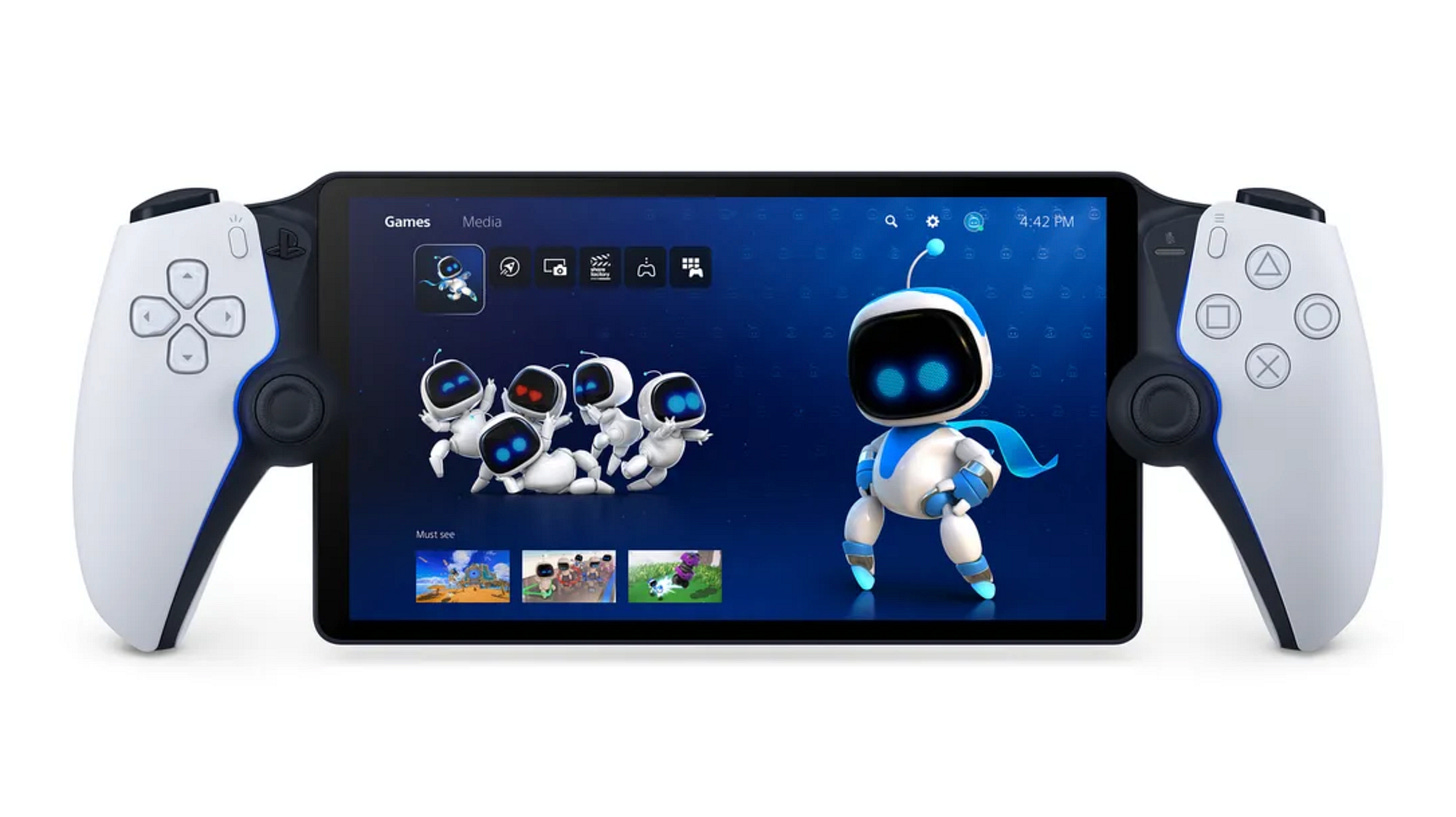Listen now on Apple, Spotify or YouTube
In This Edition
- What makes smartphones and handhelds a significant opportunity for AAA
- How Roblox can benefit the entire industry
- Why game streaming may never fully take off
Hello and welcome back to The Game Business Show and Newsletter. Have you done something with your hair? It looks nice!
For this week’s Feature episode, I caught up with analyst and Epyllion CEO Matthew Ball on the back of his hugely popular 230+ page report looking at the serious challenges facing this industry, and the opportunities going forward. Rather than dwell too much on the negatives, Matthew and I talked about key areas where there might be opportunities. We covered Roblox, AAA mobile games, Nintendo Switch 2, streaming and more. And, candidly, we might need a part two, because there was so much left unsaid (plus, we did the interview before last week’s tariff announcement. I am sure he has views).
You can watch the episode above, download the podcast or, alternatively, I’ve picked out some of the key conversation points below. I hope you find it enlightening.
Five key takeaways from my interview with Matthew Ball
1. It was not unreasonable for game companies to have expected growth post-pandemic
If you spend your time (like I do) discussing the recent plight of the video game industry, you’ll soon encounter someone who will tell you it is all down to the pandemic. The growth spike as a result of COVID-19 lockdowns meant that we were never going to grow once the world returned to normal, and that CEOs and business leaders should have recognised that and not over-spent on new teams and projects.
Matthew Ball has a slightly different perspective.
“The game industry grew at a truly remarkable rate for the preceding decade,” he told me. “And that was close to 10% per annum […]. And so even though we all knew that the pandemic had “pulled forward growth”. It was not entirely unreasonable to assume that you would see some growth, right? You could have fallen by 90% and still grown 1% per year.
“Even though we think of the heights of the pandemic as being aberrant, they actually weren't. And so it's with that in mind that people said, well, maybe not 10%, maybe not 15%, but even 5%? And 5% growth in 2022 would have been another $10 billion per year.
“I don't actually think it was unreasonable to say that there would be growth. It was hard to imagine there would be no growth.”
“I don't actually think it was unreasonable to say that there would be growth [post-COVID]. It was hard to imagine there would be no growth.”
He added: “But even if you believe that the industry overall was going to have a few tougher years, the job of every executive, every creative steward, and every financial team was to figure out how their company would grow despite that.”
2. Roblox success is a reason for optimism
Matthew Ball has always been an advocate for Roblox and user-generated platforms generally. He’s identified these as a key growth driver for the industry. Considering the relative lack of revenue these platforms generate (mostly due to its young audience), I had to ask what makes him such a believer?
“We have an industry that for three years has not grown, and by most measures in most Western and developed economies there are fewer regular players of video games today than one, two, three years ago, and in the United States, if you can believe it, there are fewer people playing video games a week than in 2019,” he says.
“With these [user-generated content] platforms, year after year after year, we are seeing 20% growth, sometimes even higher on a user basis. So… [growing] remarkably faster than the market, growing consistently so, and their userbases are as enormous as they are. By some measures, Roblox is now near 425 million monthly active users. They are delivering more hours of engagement than the entirety of Steam. In fact, you can add up the Switch, PlayStation and Xbox together and they are less.
“If you add those three things together, its size, its regularity of growth and the size of its growth, it's hard for me to say that I'm not a believer in it as an important growth engine for the industry. It also happens to be at the bottom of the age pyramid, and it is therefore onboarding hundreds of millions… I think that's a reason for optimism.”
“The top two Roblox games have roughly 60% of the monthly hours of engagement of the entirety of Electronic Arts. They are 60% the size of Fortnite Battle Royale. They're 75% the size of all of Blizzard”
Ultimately, this is where the next generation of gamers are discovering their games.
“I do think many of those players will scatter to what we traditionally call games, but that's good too,” he says. “It makes it a growth engine by indirect measures.”
Ball also shares some startling statistics about the popularity of Roblox games citing two particular titles: Blox Fruits and Brookhaven RP.
“Each of those has roughly 60% of the monthly hours of engagement of the entirety of Electronic Arts. They are 60% the size of Fortnite Battle Royale. They're 75% the size of all of Blizzard. They're 85% of the size of Counter Strike. These titles are already as large, and in some instances larger, than some of the most dominant, enviable gaming ecosystems of the last quarter century, if not longer.
“Now the question of how much growth is there? Is there enough opportunity for new developers? What are the economic limitations? All of those are relevant concerns. But we are now at a point in which the comparable size of these platforms now outstrip any other opportunity.”
3. Handheld PCs and consoles are not huge, but are a “powerful” opportunity
Xbox boss Phil Spencer has openly stated Microsoft is developing an Xbox handheld, whereas rumours are rife that PlayStation is looking into something similar following the success of its PlayStation Portal (a portable device that plays streamed PS5 games).
The PS Portal topped the revenue charts for game accessories in Europe and the US last year, while PC handhelds like Steam Deck are a popular topic of conversation within the media. However, the sales of these products are ultimately in the low millions, compared with Nintendo Switch, which boasts over 150 million units sold.
Yet Ball feels that even at relatively low volumes, handhelds like Steam Deck and Portal can make a material difference to the success of PC and console gaming.
“Microsoft is very obviously trying to get on all devices,” he begins. “Even Sony’s strategy continues to evolve, not just in the fact that they're publishing on PC and publishing faster than ever, but they've unlocked the PlayStation Portal so that you no longer have to be on your home Wi-Fi. That is a reflection, an observation, an understanding, digestion, acceptance that the console base has not grown.
“Time has actually, in many regards, shrunk. And at a certain point, you stop moving from what will the next generation [of consoles] do to change that to what other things do we need to have to change that? We don't know how many units [of PlayStation Portal] have shipped. The odds are it's only a few million. It looks like the Steam Deck only has two to three million units. These aren't enormous. But what we know is they skew to the most avid gamers. Those who spend the most, spend the most time, and have the largest social graphs. And so you might be able to say, we have 60 million PlayStation 5 customers, only three million have a PlayStation Portal, but that's probably not just a 5% increase [in spend or time]. Maybe it's 10% or 12%.
“We know [devices like Steam Deck and PlayStation Portal] skew to the most avid gamers. Those who spend the most, spend the most time, and have the largest social graphs”
“So if you say that we need to find growth, reverse player loss, reverse player time loss, enrich our ecosystem, and frankly, recoup on development budgets that continue to grow while our addressable base does not… I think that [portable consoles and PCs] become a really powerful and significant opportunity.”
4. Resident Evil’s iOS failure doesn’t mean AAA mobile games can’t work
In Matthew Ball’s initial report he suggests that smartphones are becoming a viable platform for AAA games, and we’re actually seeing that play out in certain markets and with specific titles.
“Let's keep in mind that there are three billion mobile devices,” he begins. “I'm not a person who will tell you that I think 5% of the global population is going to want to play an A, AA or AAA game – at least how we define them today – on a mobile device. Yet when we're talking about three billion, I do believe that we can have a material impact on those devices […]. It's already clear through the success of PUBG or Free Fire or Fortnite mobile back in the day, that that player base can be pretty meaningful.”
“I tend to believe that in five or six years when there are a billion people who can play EA Sports FC on their iPhone or iPad… we may not see tens of millions of people buying it, and certainly I don't think they're going to do it at a $70 price point. But do I believe that there's a meaningful growth opportunity for EA that stems from the fact that they can finally reach most of the global fans for football? Without asking them to have a console or gaming PC? And that they can take it anywhere? You bet.”
Apple has been pushing AAA games on its latest iPhone models to limited success. Capcom has published a number of its more recent Resident Evil titles on the platform, with the latest title – Resident Evil 2 – generating less than $100,000 in nearly two months (AppMagic estimates). Yet Ball doesn’t believe this is a good indicator of the opportunity mobile offers these games.
“The only people who can actually play Resident Evil on an iPhone have to have bought the very, very highest end iPhone over the last two years,” he continues.
“There's roughly 40 million people who have that device. The device, by the way, costs $1, 600 or $1,700. And so, fundamentally, how many of those 40 million people actually play video games? The answer is not going to be many. And then we have the secondary question, which is, how many of those who would buy a Resident Evil game [on smartphones] haven't already bought it [on another device]? And then there's that third thing, which is how many of the people who might like Resident Evil games generally, as an abstract shooter, but the game isn't for them?
“I think all of those start to become pretty meaningful discounts. In contrast, if we said in 2030, you had a title that was simultaneously released on mobile devices and can reach nearly all of the mid core and up audience… I think you'd see, again, material, not massive, but material sales.”
“It is kind of impossible for the average Fortnite player, or COD, or Warzone, or Apex player to believe that there are 150 million people playing Free Fire Mobile every day, primarily on low end Androids, and yet they are”
He adds that the mobile game Free Fire has 50% more daily players than Fortnite has monthly players.
“It is kind of impossible for the average Western shooter gamer, or Fortnite player, or COD, or Warzone, or Apex player to believe that there are 150 million people playing Free Fire Mobile every day, primarily on low end Androids, and yet they are.
“I should add the other filter, which is the people who all have that highest end iPhone, again, for $1, 600 or $1, 700, nearly none of them are the people who today play high fidelity, hardcore mobile games, because most of those people sit in Indonesia and India, Latin and South America, who certainly can't afford one of those iPhones today.”
5. Streaming probably isn’t the future.
Over the last few months, The Game Business has interviewed numerous developers and publishers and subjected them to our ‘quickfire round’. This is where we ask a range of different questions and ask our guests to give instant answers. One of those questions is invariably ‘is game streaming the future of our industry’, and almost every time the answer has been ‘yes’.
Matthew Ball, however, doesn’t think so.
“There's this interesting line that [Epic CEO] Tim Sweeney had a few years ago that I've been joyfully calling Sweeney's Law, which goes something like: Efforts to place real time processing on the wrong side of the latency wall are bound to fail because while networking infrastructure and latency are improving, local computing performance is improving faster’. Yes, all of the technical problems that we're facing with cloud game streaming are improving, but the chips on our phones are improving faster.
“Yes, all of the technical problems that we're facing with cloud game streaming are improving, but the chips on our phones are improving faster”
“Right now, my iPhone can [play PS4 games]. I'm cheating a little bit. Not a PS4 Pro and certainly not a PS5. And so many of the problems that cloud game streaming is intending to solve, many, not all, are being remedied by the fact that by 2030, most smartphones will be able to do a decent enough job themselves without needing to rely on the network.
“And so that's solving the accessibility problem [that streaming is meant to solve], but differently.”
That’s it for today’s Feature special. Please do check out our other interviews on this subject, including the views of video game investors and why Netflix believes it can help unlock new gamers. Of course, a lot of these efforts are being undermined somewhat by the on-going tariff situation, and do check out my interview with the Entertainment Software Association about the troubling situation.
We’ll be back with our News and Analysis Show and Newsletter in just a few days. Until then, thank you for reading.
















Share this post